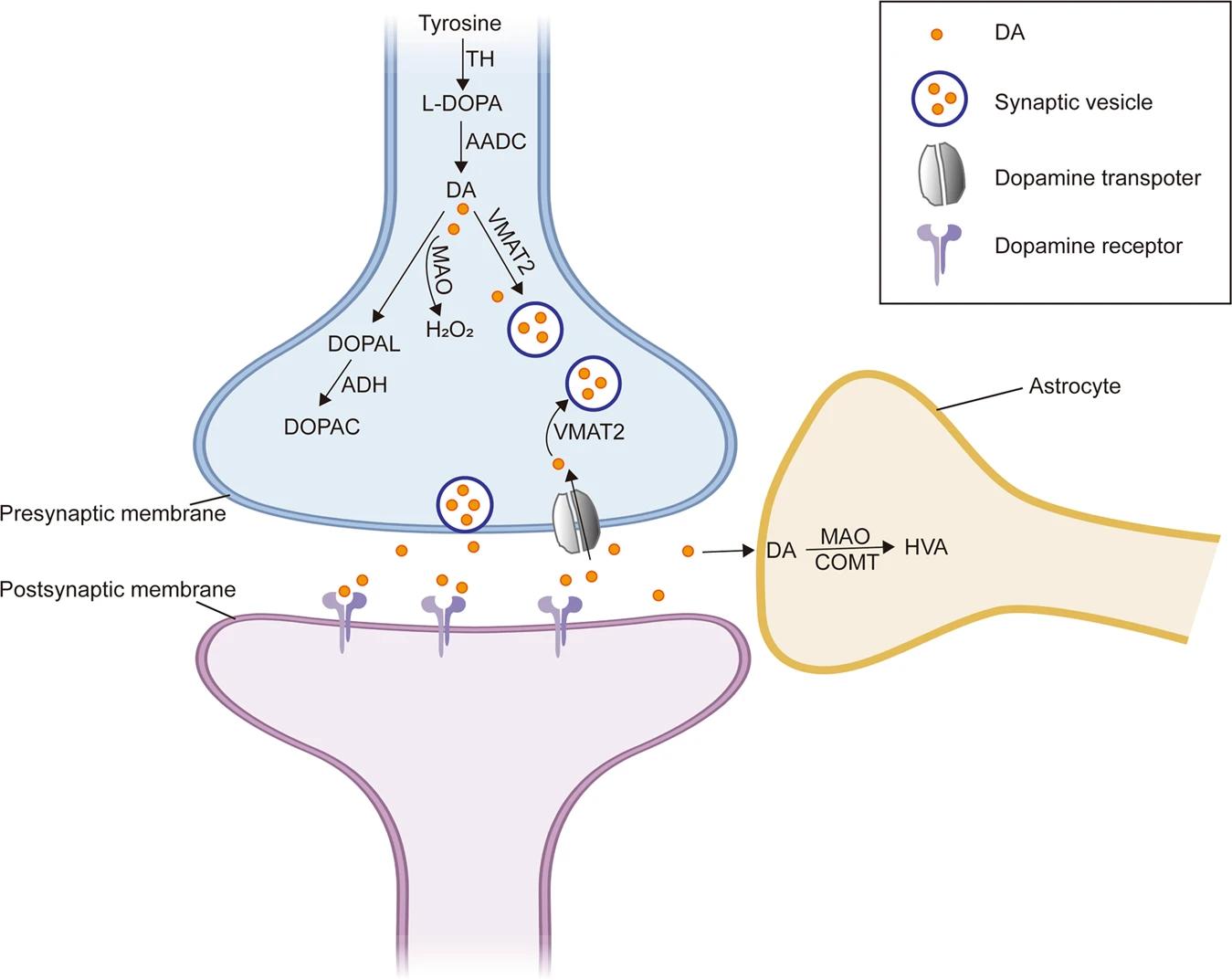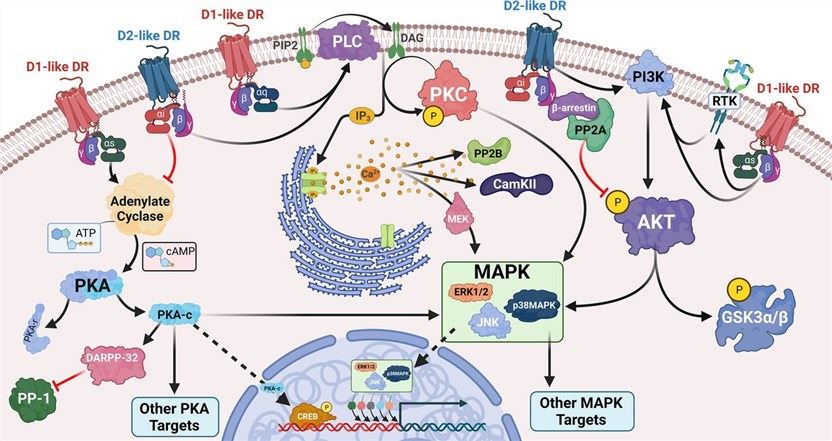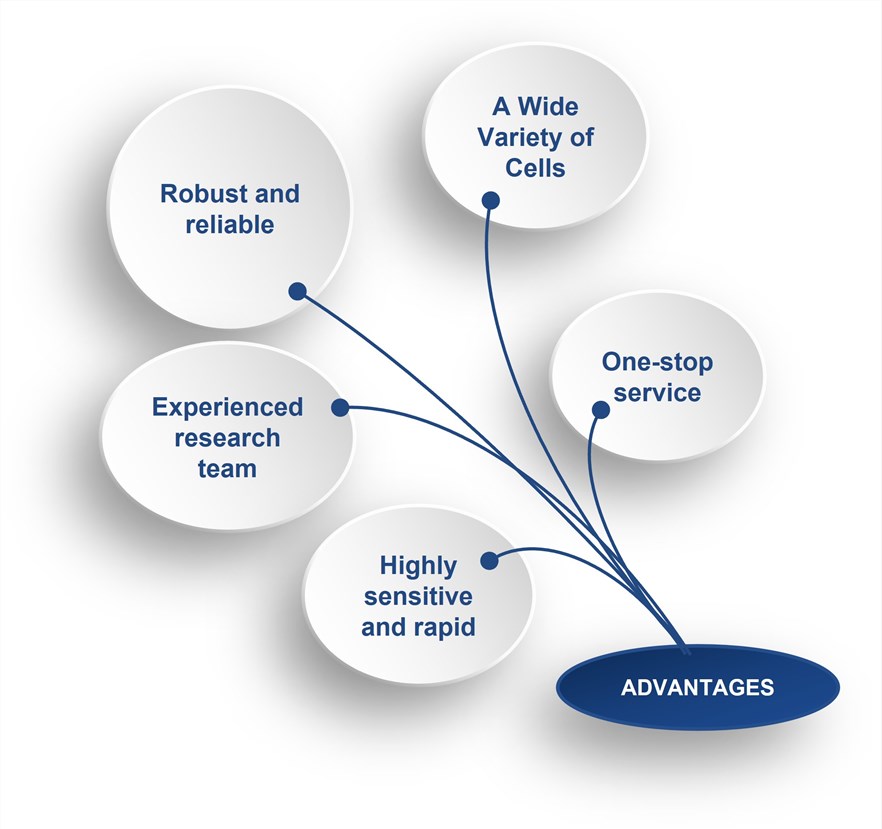Hi-Affi™ In Vitro Cell based Dopamine Receptor Functional Assay Service
Dopamine Receptors with Future
Dopamine receptors are G protein-coupled integral membrane receptors. They have crucial modulator roles in motor activities, motivation, drive, and cognition, and are widely dispersed throughout the brain. There are five distinct types of dopamine receptors, designated D1, D2, D3, D4, and D5. The different receptors throughout the body provide unique functions. Many neuropsychiatric disorders, such as schizophrenia, bipolar disorder, depression, and Parkinson's disease, respond well to drugs that target dopamine receptors. Thus, drug development in neuropsychiatric disorders may benefit from a more detailed understanding of dopamine receptor function.
 Fig.1 Dopamine receptors mediating dopamine metabolism in dopaminergic neurons.1
Fig.1 Dopamine receptors mediating dopamine metabolism in dopaminergic neurons.1
Our Capability
To help in determining the role of dopamine receptors, Creative Biolabs, a forerunner in the study of GPCR function, offers a fast and robust Hi-Affi™ in vitro cell-based dopamine receptor functional assay service.
Different dopamine receptors activate different signaling pathways. They activate the G proteins coupled to receptors and trigger the different downstream signaling pathways. Based on this fact, our Hi-Affi™ in vitro cell-based dopamine receptor functional assay service is carried out by measuring the cAMP concentration and ion flow to assay compounds, as well as analyzing their capability to modulate dopamine receptors and signaling pathways. We leverage our extensive professional expertise and project experience to help customers:
- Design experiments
- Select the optimal analytical methodology
- Develop and verify the specific assay(s)
 Fig.2 The signaling pathway of dopamine receptors.2
Fig.2 The signaling pathway of dopamine receptors.2
Highlights
Leveraging our extensive expertise and experience, Creative Biolabs is committed to providing top-ranking services for global customers. We are confident in delivering the desirable outcomes for each of our customers.

Become a Partner

As a forerunner in the study of GPCR function, Creative Biolabs is committed to offering cutting-edge service and innovative solutions to every customer. Simultaneously, we provide related tests to aid in the identification of GPCR function.
If you are interested in our Hi-Affi™ in vitro cell-based dopamine receptor functional assay service, please contact us at your convenience following the above inquiry mode. Each member of our group is eager to get started working with you.
FAQs
Q1: What transpires when blocking dopamine receptors?
A1: Parakineis, dystonia, tics, tremors, oculomotor movements, orolingual and other dyskinesias, and akathisia have all been linked to dopamine receptor-blocking medications in children and adolescents. Anytime after starting therapy, symptoms are possible.
Q2: Can ELISA detect receptors?
A2: The enzyme-linked immunoabsorbant assay (ELISA) has many benefits for identifying and measuring cell surface receptors. The current cell surface ELISA methods allow for unambiguous evaluation of receptors located specifically on the plasma membrane.
References
-
Xu, Haiyun, and Fan Yang. "The interplay of dopamine metabolism abnormalities and mitochondrial defects in the pathogenesis of schizophrenia." Translational Psychiatry 12.1 (2022): 464.
Distributed under Open Access License CC BY 4.0, without modification. -
Channer, Breana, et al. "Dopamine, Immunity, and Disease." Pharmacological Reviews 75.1 (2023): 62-158.
Distributed under Open Access License CC BY 4.0, without modification.
For Research Use Only.
